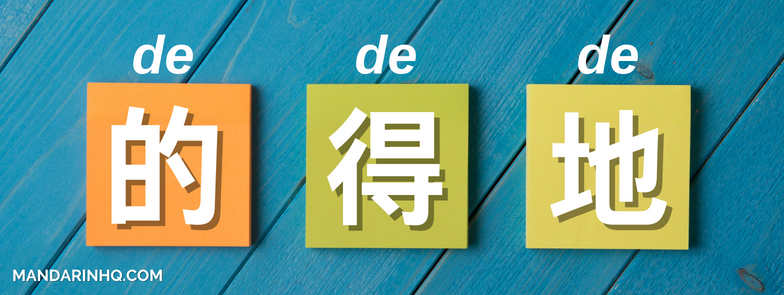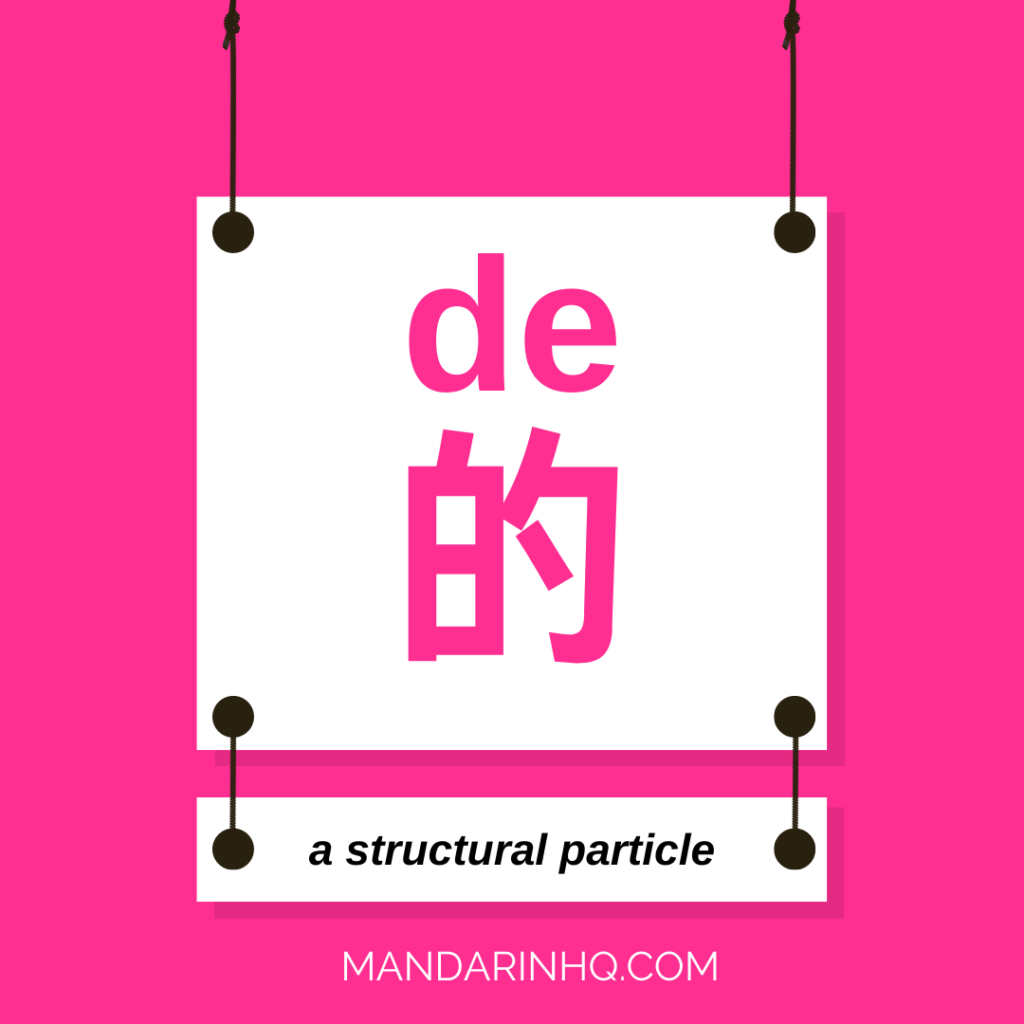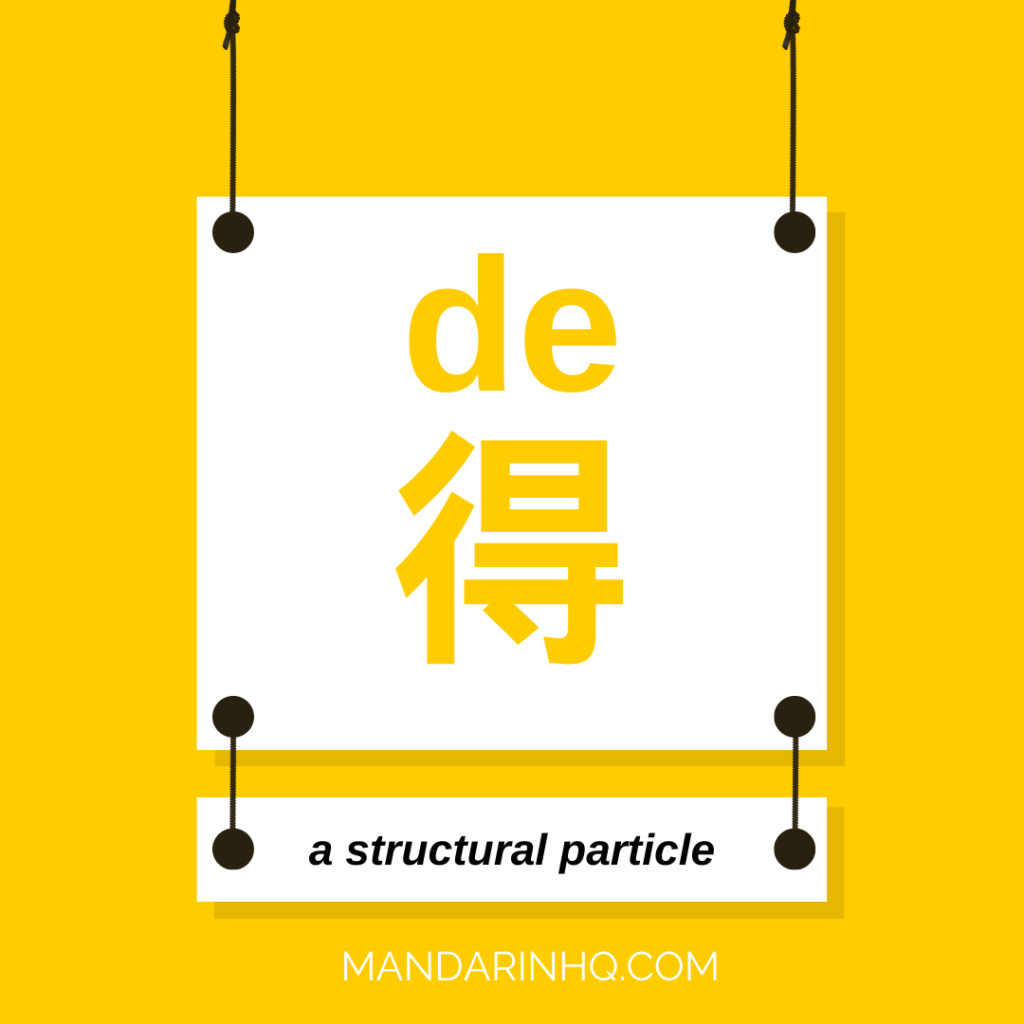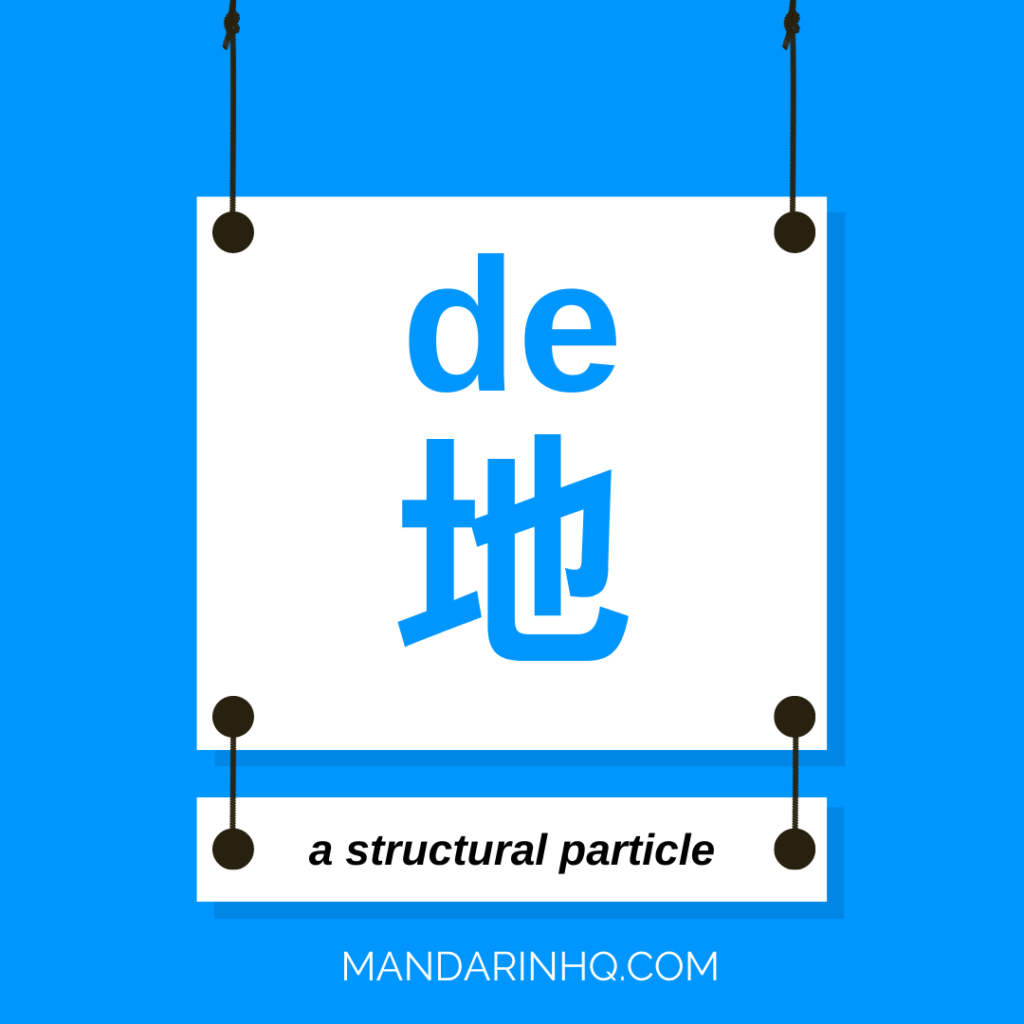The Chinese particles 的 (de), 得 (de) and 地 (de) sound the same.
But they have different meanings.
In this video we highlight the differences and learn how to use them correctly!
The key differences between "的 de" , "地 de"and "得 de"
The first 的 (de) is known as 白勺的 (bái-sháo de) because it’s made up of the characters 白 (bái) and 勺 (sháo).
Usage #1: 的 (de) is used to mark possession. It works like the apostrophe-"s" in English.
Examples:
Martin's, Dad's, Lisa's
Structure: Noun + 的 + Noun
Examples:
奥利的手机
ào lì de shǒu jī
Ollie's cell phone
马丁的车
mǎ dīng de chē
Martin's car
爸爸的袜子
bà ba de wà zi
Dad's socks
Usage #2: 的 (de) is also used to describe a noun. It can be helpful to think of it as "who, when, where, what, which, whom & that" in English.
Structure: Description + 的 + Noun
Examples:
穿连衣裙的女孩
chuān lián yī qún de nǚ hái
The girl who is wearing a dress.
lit."wear a dress + 的 + girl"
很爱跳舞的男孩
hěn ài tiào wǔ de nán hái
The boy who really loves to dance.
lit."really love to dance + 的 + boy"
白色的杯子
bái sè de bēi zi
white cup
lit."white + 的 + cup"
You are describing a cup that is white.
最好的朋友
zuì hǎo de péng you
best friend
lit."best + 的 + friend"
You are describing the friend that is best.
This 得 (de) is placed after a verb, to describe how the verb is carried out.
Structure: Verb + 得...
Examples:
喝 hē (drink)
喝得多 hē de duō (drink more)
吃 chī (eat)
吃得少 chī de shǎo (eat less)
她喝得多,吃得少。tā hē de duō, chī de shǎo.
She drinks more and eats less.
学 xué (learn)
学得快 xué de kuài (learn fast)
忘 wàng (forget)
忘得快 wàng de kuài (forget fast)
他学得快,忘得快。tā xué de kuài, wàng de kuài.
He learns fast and forgets fast.
跑 pǎo (run)
跑得快 pǎo de kuài (run fast)
爬 pá (crawl)
爬得慢 pá de màn (crawl slowly)
兔子跑得快,乌龟爬得慢。tù zi pǎo de kuài, wū guī pá de màn.
The hare runs fast and the tortoise crawls slowly.
睡 shuì (go to bed / sleep)
睡得早 shuì de zǎo (go to bed early)
睡得晚 shuì de wǎn (go to bed late)
我工作日睡得早,周末睡得晚。wǒ gōng zuò rì shuì de zǎo, zhōu mò shuì de wǎn.
I go to bed early on weekdays and late on weekends.
说 shuō (speak)
说得流利 shuō de liú lì (speak fluently)
写 xiě (write)
写得不好 xiě de bù hǎo (write badly)
他中文说得流利,但汉字写得不好。tā zhōng wén shuō de liú lì, dàn hàn zì xiě de bù hǎo.
He speaks Chinese fluently, but writes Chinese characters badly.
This 地 (de) is known as 土也地 (tǔ-yě de), since it’s made up of a 土 (tǔ) component on the left and a 也 (yě) on the right.
You use it to turn an adjective into an adverb.
e.g. ”happy” (adj.) → “happily”(adverb)
Structure: Adjective + 地 + Verb
Examples:
开心 kāi xīn (happy)
开心地 kāi xīn de (happily)
开心地笑 kāi xīn de xiào (laugh happily )
伤心 shāng xīn (sad)
伤心地 shāng xīn de (sadly)
伤心地哭 shāng xīn de kū (cry sadly )
生气 shēng qì (angry)
生气地 shēng qì de (angrily)
生气地说 shēng qì de shuō (speak angrily )
大声 dà shēng (loud)
大声地 dà shēng de (loudly)
大声地说 dà shēng de shuō (speak loudly )
Summary of the different usages of 的 de, 得 de and 地 de
1. Add 的 (de) after a noun to mark possession (e.g. … John 的车,John de chē , John’s car)
or to give extra information about the noun (e.g. 白色的车,bái sè de chē, white car )
Add 得 (de) between a verb and an adjective to describe how the verb is carried out (e.g. 跑得快,pǎo de kuài, run fast)
Add 地 (de) after an adjective to turn it into an adverb (伤心地,shāng xīn de, sadly)




